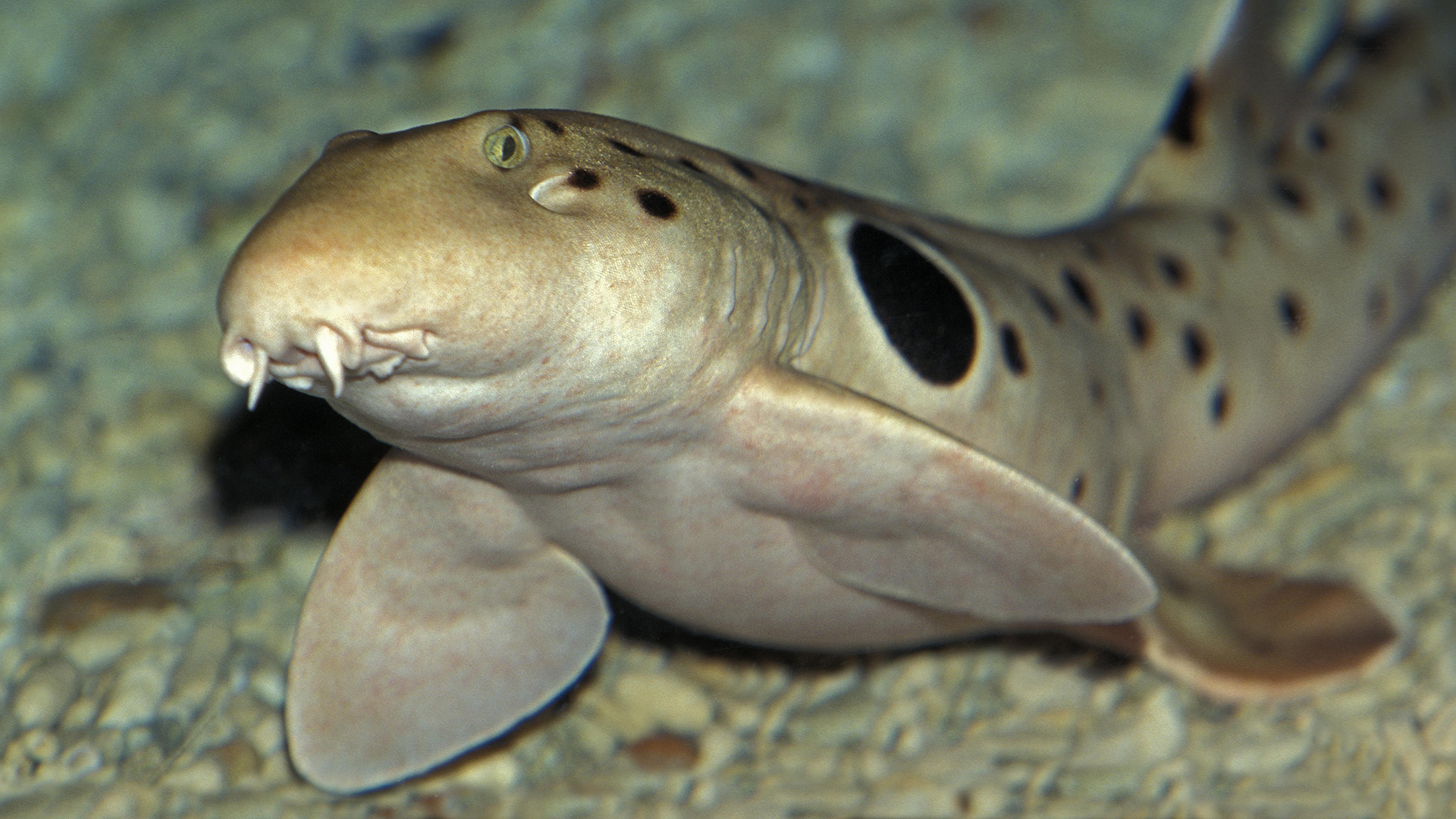'Walking sharks' caught on video, astound scientists
This unique ability allows these fish to hunt where other sharks can't survive.

On a remote outcropping at nightfall on the coast of Papua New Guinea on May 3, 2022, scientists encountered something amazing: a walking shark. Using its fins to drag itself, the diminutive tan-and-black-speckled shark shimmied across a tide pool that contained barely enough water to skim its belly, moving like a lumbering sea lion as it dragged its body across the shore.
The creature was an epaulette shark (Hemiscyllium ocellatum), and it is unique among shark species in its ability to walk on land. Forrest Galante, a conservationist and biologist, recently shared rare footage of this unusual species in a new special for Discovery Channel's Shark Week called "Island of the Walking Sharks."
"This is the first time in history one of the Papuan species of epaulettes has been documented walking," Galante said on the show. "This is so incredible."
Scientists think epaulette sharks, a species found throughout the southern coast of New Guinea and the northern coast of Australia, evolved the ability to walk because it helped them forage for food in environments where other sharks couldn't survive.
"All traits are selected for when it allows [a species] to survive better and eke out an environment where they're safe and can get food," said Gavin Naylor, director of the Florida Program for Shark Research at the Florida Museum of Natural History in Gainesville. Epaulette sharks, which grow to about 3.3 feet (1 meter) in length, swim into shallow coral reefs to hunt for crabs and other invertebrates, their preferred food. When the tide goes out, they're perfectly happy hanging out in tide pools and munching on these creatures. "But once they're done, they're trapped," Naylor, who was not involved in the television special, told Live Science. "What epaulettes have learned to do is climb up in the reef and plop themselves in the next tide pool."
Related: Whale sharks are the world's biggest omnivores, scientists discover
Epaulette sharks can haul themselves 100 feet (30 m) or more across dry land, Naylor said. And fin walking isn't the only adaptation that allows them to do so; this species can survive when oxygen is scarce, spending up to an hour on land on a single breath, Live Science previously reported. This ability also helps epaulettes thrive in the low-oxygen waters of tide pools.
Get the world’s most fascinating discoveries delivered straight to your inbox.
Epaulette sharks likely evolved the ability to walk in the past 9 million years, scientists reported in a 2020 study published in the journal Marine & Freshwater Research. That's incredibly fast for sharks; to put that into perspective, hammerhead sharks, one of the youngest shark groups, evolved about 45 million years ago, according to the Natural History Museum in London. And epaulette sharks are potentially forming new species at a remarkably fast rate, Naylor said. Because of the sharks' unique mobility, small populations frequently become isolated.
"You might have one that's in one part of the reef; then it decides to go on an Australian walkabout," Naylor said. A river or other geographical barrier might shift just enough to cut off a small group of sharks from the main population. Over time, these populations can become genetically distinct, as their genes mutate randomly and adapt separately from other gene pools, Naylor said.
One big question about these sharks that scientists hope to answer is how a species with so little genetic diversity within populations could produce individuals that differ so greatly in their appearance. Patterns in the epaulette shark's distinctive spots vary so widely that no two individuals look exactly alike, and Naylor and other scientists suspect that epaulettes can actually morph their color patterns at will.
"We haven't proven it, but we think it's happening," Naylor said.
Originally published on Live Science.

Isobel Whitcomb is a contributing writer for Live Science who covers the environment, animals and health. Her work has appeared in the New York Times, Fatherly, Atlas Obscura, Hakai Magazine and Scholastic's Science World Magazine. Isobel's roots are in science. She studied biology at Scripps College in Claremont, California, while working in two different labs and completing a fellowship at Crater Lake National Park. She completed her master's degree in journalism at NYU's Science, Health, and Environmental Reporting Program. She currently lives in Portland, Oregon.



